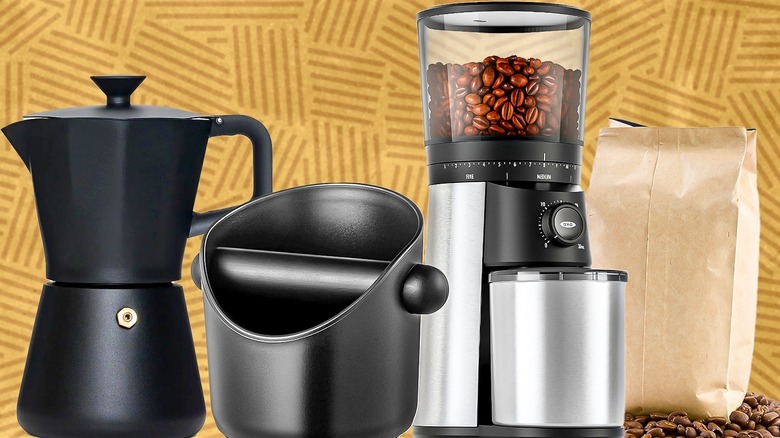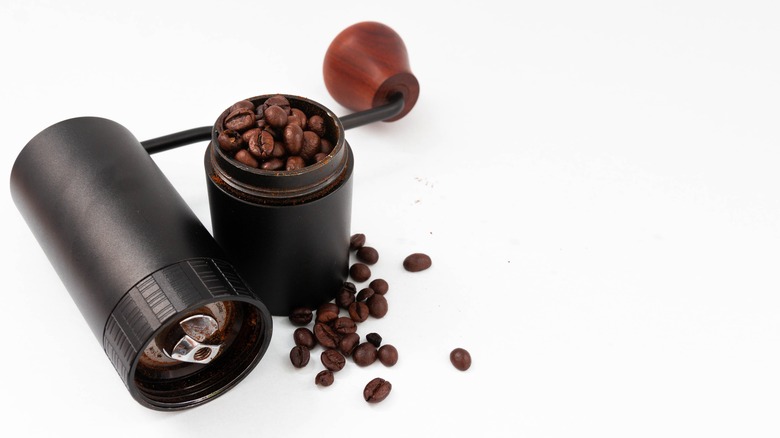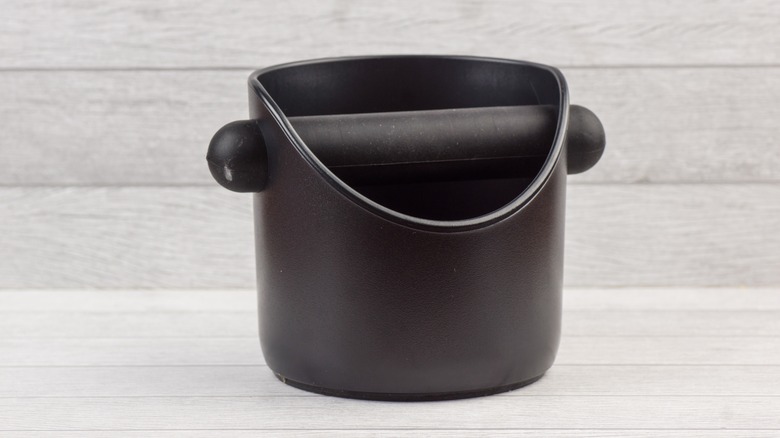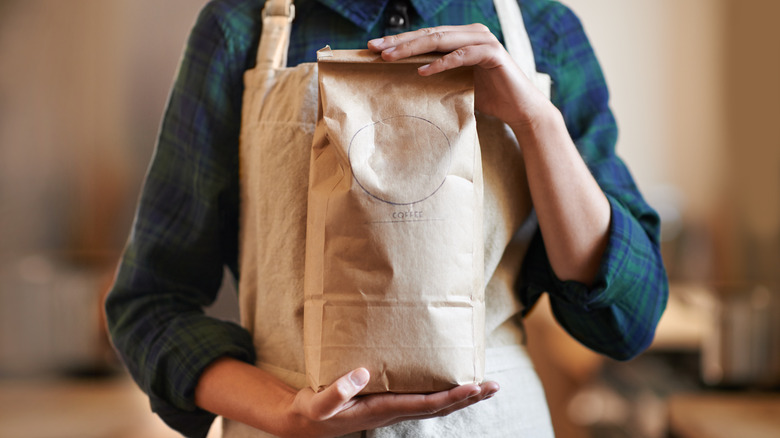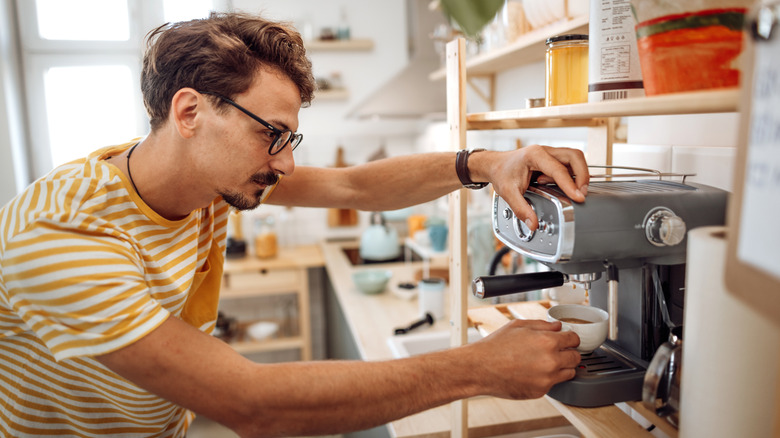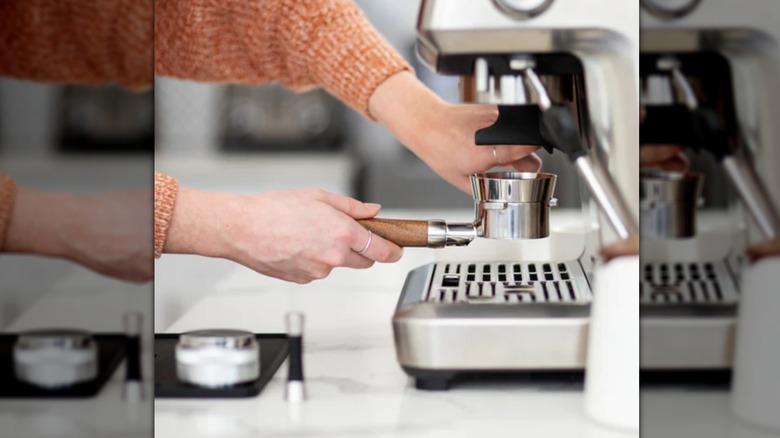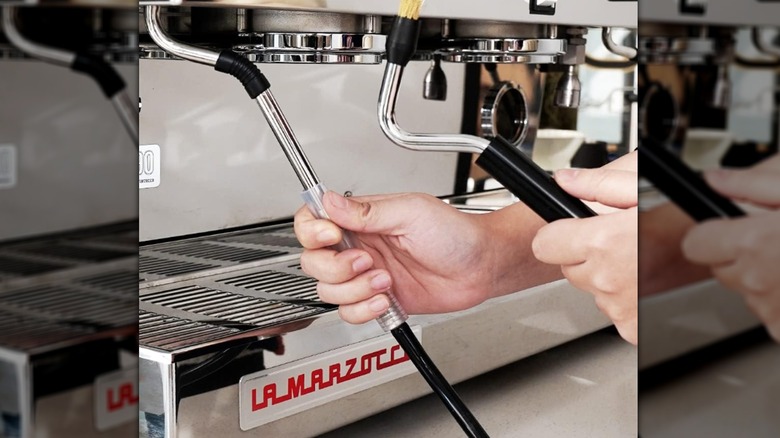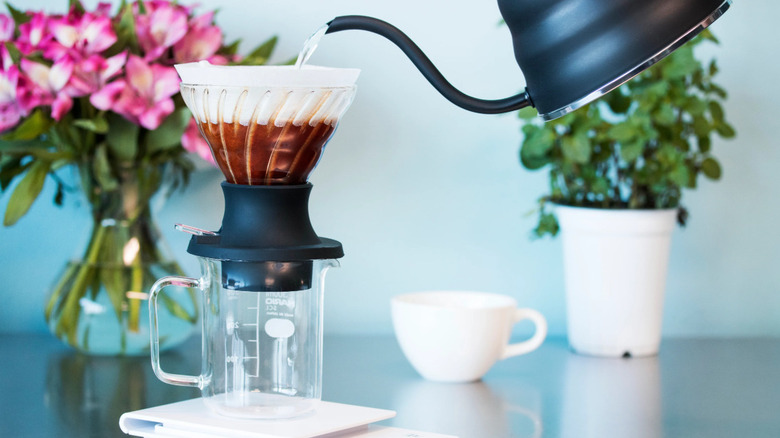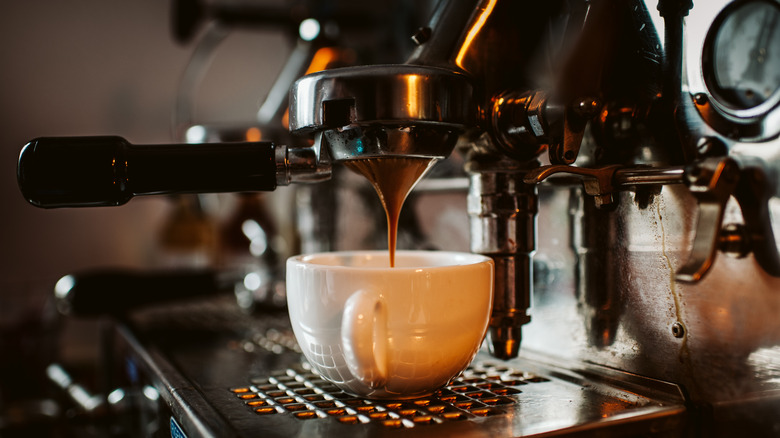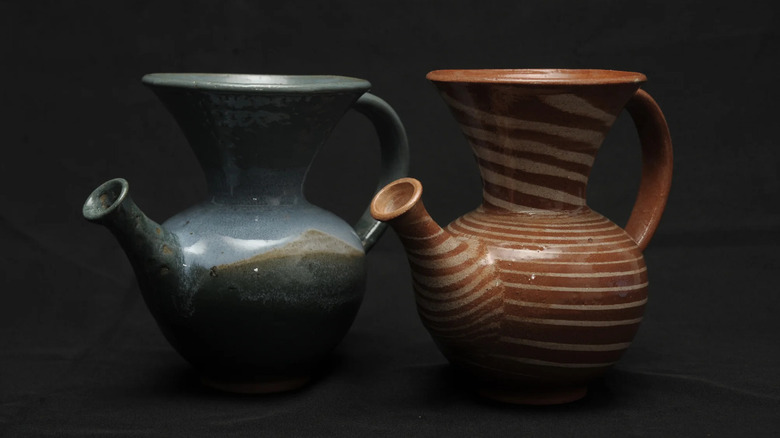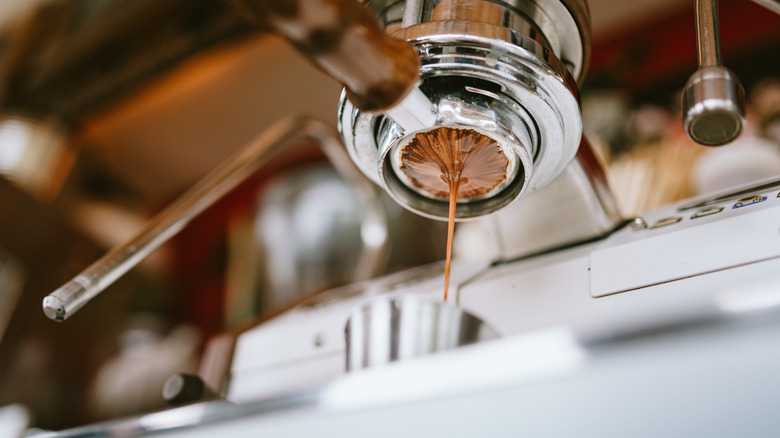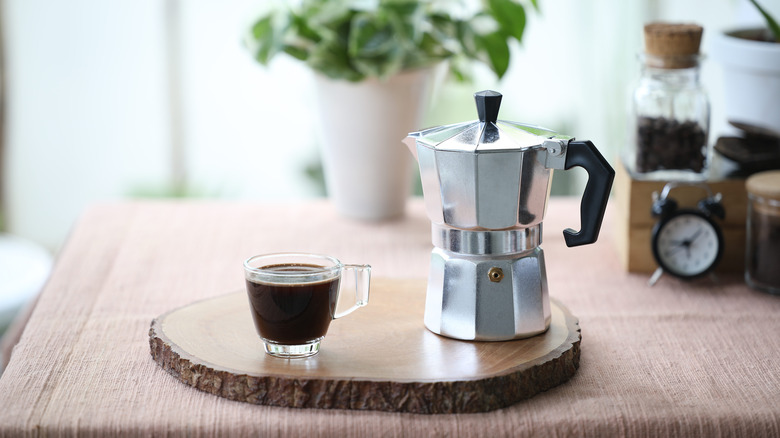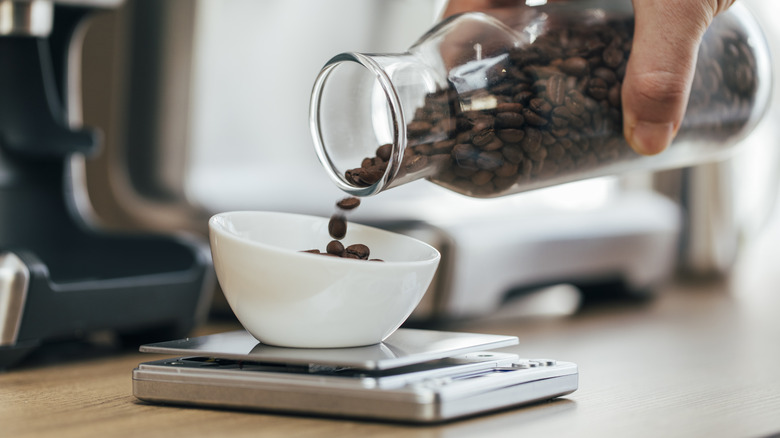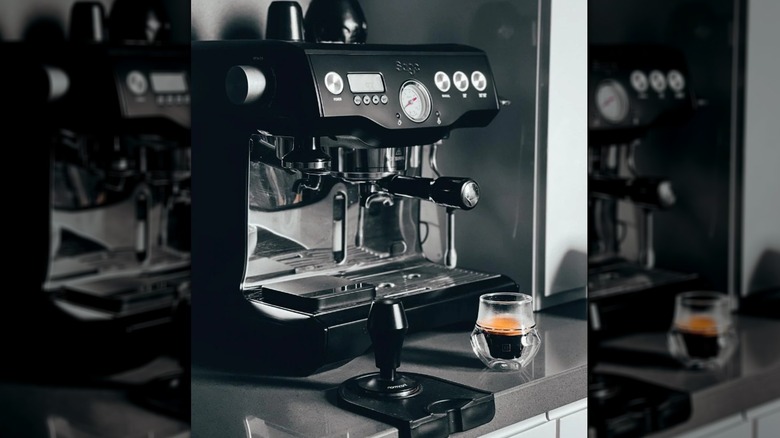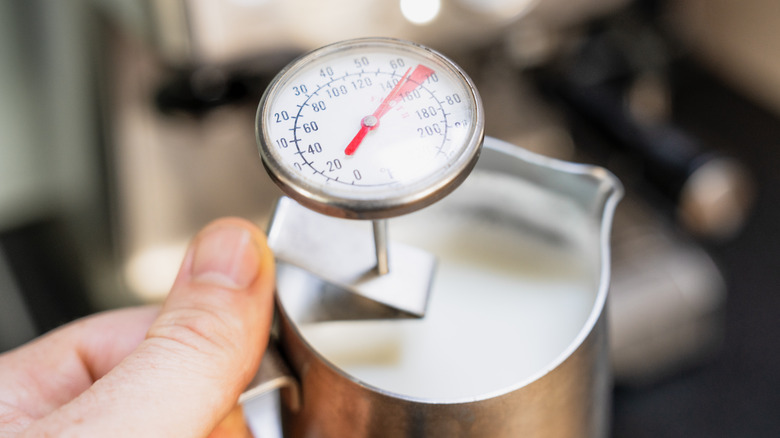14 Coffee Essentials Baristas Swear By
We may receive a commission on purchases made from links.
So you've got the coffee, espresso machine, and milk — now what? There's a lot more to being the best at-home barista than most of us can fathom. Coffee is an art form, and for those who appreciate the delicate process and unparalleled taste, nothing beats having a home coffee bar stocked to the nines with everything you could possibly need. Gone are the days when a cup of joe was merely a caffeine fix; now, that same cup represents a dance of precision and passion — a dance that every barista both loathes and longs for.
Behind the humble coffee bean lies a laundry list of essential tools and gadgets, each contributing to the alchemy that transforms a simple cup into a sensory masterpiece. From the grind of the beans to the temperature of the water, every element plays a crucial role. For true caffeine enthusiasts, settling for anything less than an exceptional cup is simply not an option. Integrating these vital tools into your coffee-making routine elevates your espresso from satisfactory to sublime and transforms your drip coffee from ordinary to outstanding. Explore our list of barista-recommended essentials to give your home espresso bar the upgrade it's been yearning for.
Burr coffee grinder
Arguably the most significant step — and a step that could make or break your coffee — is the grind. This crucial phase requires using one of the most fundamental tools in your home coffee arsenal: the grinder. But not every coffee grinder is created equal. There are two different types of coffee grinders; one of which you'll find at supermarkets and large online retailers, and another that requires a little sleuthing. You can probably guess which one you should be investing in.
Blade and burr coffee grinders may look and act similarly, but there is a stark difference in the end result. Blade grinders use blades (go figure) to slice and slash your beans, resulting in an uneven, chunky mess of ground coffee. Burr grinders, on the other hand, crush the beans to give you even, smooth grounds at whichever grind size you require. The next step is choosing whether or not to use a manual or electric grinder. Nicole Battefeld from "She's the Barista" podcast says, "I am using hand grinders for my filter coffees and electric grinders with flat burrs for my espressos. Hand grinders are a real workout if you want to use them to make espresso, as you need to grind for a long time to get 20 grams. When it comes to electric grinders, I would recommend not going for the cheapest option."
Knock box
Did you know you don't have to fill your sink with coffee grounds when making espresso? You also don't have to make a mad dash to the garbage can, cupping the bottom of your portafilter in vain to reduce the amount of coffee drippage and soggy grounds all over your kitchen floor. Believe it or not, there's a handy tool to eliminate this common coffee conundrum.
Whimsically called a knock box, this handy little hollow box is designed to keep your coffee grounds contained while stationed right next to your espresso machine to alleviate the need to roam around the room with a sloppy mess. The box has a bar attached at the top, providing the "knock" part of its name. To empty your portafilter after pulling a shot, simply tap it upside-down on the bar. The espresso grounds should plop out in a neat little shape adequately referred to as a "puck." Invest in a good quality, sturdy knock box since this tool takes the most damage out of all of your coffee bar items. After you have a nice collection of grounds in your knock box, use them for various household tasks, like cleaning pots and pans, or rejuvenating your garden.
A fresh bag of beans
It goes without saying that to make coffee you need, well, coffee. But not just any bag of beans will do if your mission is to craft a quality cup that will impress even the most seasoned barista. First, start with organic and preferably fair-trade beans from a reputable roaster. Go for a medium roast if you want a quintessential cup that will please most of your guests. Dani Bordiniuc from Brewing With Dani says, "Stay away from coffee beans with a "best before" or "use by" date. Always look for a "roasted on" date on the packaging."
Once you pick a go-to brand and roast, make sure you're keeping those beans as fresh as can be. The freshness of your coffee significantly impacts the flavor imparted. According to Bordiniuc, "If you prefer an easy and convenient solution for your coffee beans, invest in an airtight container. The mechanism pushes the air out, and by doing so, it slows the rate of oxidation, which means the beans will stay fresh for longer."
Pump-driven espresso machine
At first glance, it might not seem like espresso machines differ in many ways other than quality. However, the choice of machine can significantly impact the preparation of your beloved morning brew. Espresso machines generally fall into two categories: pump-driven or non-pump, each yielding distinct espresso profiles.
Non-pump machines typically rely on steam for brewing espresso. Within the machine, hot water boils to generate steam pressure for extracting your shot, while this boiling water is also used to make the coffee itself. The drawback of steam-powered equipment lies in its pressure limitations, reaching approximately one and a half bars. Industry experts unanimously recommend nine bars of pressure for a genuine espresso shot.
Pump-driven espresso machines are designed to produce superior-quality espresso, with separate systems in place to control the machine's pressure and water temperature. An electric pump ensures that nine bars of pressure are produced to create a delicious shot with rich flavors, silky crema, and an enticing aroma. Generally, pump-driven machines are more expensive than steam-driven machines, but they can be found at a variety of price points, so you can brew budget-friendly espresso at home.
Espresso dosing funnel
When working with coffee grounds, you'll find your workstation in disarray quickly and often. Fortunately, there's a tool to alleviate almost every possible mess accumulating as you prepare your brew. Battefeld recommends using a dosing funnel to transfer your ground espresso to the portafilter as an easy solution for a disastrous coffee station.
An espresso dosing funnel is designed to fit snuggly onto your portafilter, guiding your espresso grounds precisely into the basket below. This tool ensures even distribution of the grounds within the basket and prevents clumps and excess grounds from building up. A dosing funnel guarantees that you'll have an ideal shot every time, giving you the confidence to brew espresso that maintains its consistency and quality.
You can find dosing funnels online, ranging from $15 to $30. While it might be tempting to opt for the cheapest option, as with most tools in your home coffee arsenal, investing a bit more upfront is advisable so that you won't find yourself replacing a broken funnel within months. Investing more now ultimately means saving money in the long term and contributing to a more durable and reliable coffee bar setup.
Steam-cleaning espresso machine brush
There's a lot of debate over how often you should clean an espresso machine. Still, one thing always stands true: A well-maintained machine means better-tasting espresso, emphasizing the importance of cleanliness. Deploying a little elbow grease to clean your equipment usually gets the job done to a satisfactory level. But if you want to bring your machine to immaculate, brand-new condition, a steam-powered brush is your answer. These brushes are simple to use and can be found for as little as $30. The main drawback to this tool is that it requires a steam wand, which not all espresso machines are equipped with.
Simply attach the brush to the steam wand on your machine and use the steam produced to clean the group head. The group head, where water and espresso converge to orchestrate the enchanting alchemy of transforming water into a captivating coffee creation, stands out as arguably the most crucial area to keep meticulously clean. Maintaining your machine produces a tastier cup and ensures that your machine will continue to run properly for many years to come.
V60 coffee maker
When envisioning a coffee maker, nothing that looks like a V60 brewer will likely come to mind. This machine resembles a funnel or triangular teacup rather than something that brews your morning pick-me-up. The V60 brewer, despite its technical and futuristic-sounding name, is revered for its simplicity and ability to produce a bright, flavorful cup. Unlike an Aeropress, which operates similarly to a French press, the V60 resembles most traditional pour-over brewers, with some differences between varying styles and materials.
Bordiniuc suggests using a Hario V60 immersion brewer, calling it an "underrated two-in-one coffee maker." He says, "If you keep the base open, then you can use it for pour-overs, just as you would do with a regular V60. But if you close the base, you can use it for immersion. Place the paper filter, add the ground coffee, pour hot water, let it steep, and press to release. The result is a sweet, full, and rich brew close to the one you would make with a French press, but with the Hario Switch, the coffee will taste 'cleaner' because it goes through a paper filter."
Naked portafilter
An espresso machine would be nothing without its accompanying portafilter. These espresso components produce the fruits of all your hard labor — that rich, velvety, dark cup of delightful indulgence. After tamping the espresso into the filter basket, the portafilter is fastened into the machine, and the brewing commences. Portafilters fit into one of two categories — spouted or naked. You're more likely to see a spouted portafilter at a coffee shop with a high volume of customers. The spouts on the filter allow multiple shots to be pulled simultaneously and distributed into different cups, making churning out drink after drink a breeze.
However, in your home coffee setup, you can capitalize on the advantages of using a naked portafilter. A naked portafilter has no spouts, so the espresso is transferred directly into your cup. The lack of spouts eliminates the need for the delicate beverage to travel through multiple channels before you take that first long-awaited sip and prevents mistakes during the process. Bordiniuc recommends using this style of portafilter, saying, "Not only is it very satisfying to watch the entire process of espresso extracting into the cup, but you are able to notice any spraying or channeling occurring and correct your routine, making sure you evenly distribute the ground coffee in the basket, as well as apply a flat and even tamping."
Vandola brewer
At times, the most cherished approach is often the simplest. The Vandola coffee maker epitomizes the beauty of simplicity. Crafted by Minor Alfaro, a Costa Rican coffee shop owner, each Vandola brewer possesses a distinctive quality usually only found in handmade products. Not only does it brew a delightful cup, but it also serves as a captivating addition to your kitchen, infusing a touch of rustic elegance into your home coffee bar.
The Vandola brewer operates much like any traditional pour-over mechanism but with a distinguishing feature — it is crafted from clay instead of the more common glass. The clay composition engages with the coffee, resulting in a vibrant flavor, enhanced texture, and a delightful aroma. Although each Vandola requires over a month to create, the anticipation is rewarded with a one-of-a-kind coffee-making apparatus. This brewer stands as a testament to the craftsmanship that elevates a simple cup of coffee into a piece of art and a tangible representation of coffee's ability to transcend cultural boundaries.
Puck screen
Usually, you can rely on your espresso machine to properly prepare your warm, crema-laden creation. But there are some common errors committed by your trusty machine that can be alleviated with simple tools and tricks. If your espresso was prepared incorrectly, channeling is likely the cause. When your coffee is channeling, it means that the hot water entered your portafilter and found a small path to brew through rather than flow evenly across the surface of the portafilter basket. This will result in a weaker-tasting espresso and wasted coffee. Using the aforementioned naked portafilter helps uncover this frequent filter failure, and a puck screen can prevent it from happening in the first place.
Nicole recommends using a puck screen to achieve even water distribution throughout the espresso-brewing process. The puck screen rests between the group head and portafilter basket, providing a barrier for the water to flow through uniformly. Utilizing a puck screen increases the likelihood of consistently capturing well-balanced shots, and at less than $20, they're well worth the investment.
Moka pot
Ahh, the beloved moka pot. Your favorite coffee influencer likely discovered their love of making homemade espresso using a moka pot. One of the most popular coffee-making apparatuses in the world, this convenient and aesthetically pleasing device is essentially a stovetop percolator. Not only is this little brewer inexpensive and easy to use, but it makes a delicious brew that parallels the espresso at your favorite café.
To use this ingenious device, add water to the bottom chamber and place coffee grounds in the filter basket above. Put the moka pot on the stove and wait patiently as your little energizing cup of flavorful luxury comes to life. Steam is created as the water heats up, building pressure that forces hot water through the coffee grounds and into the upper chamber.
While this coffee maker doesn't create authentic espresso and instead delivers something akin to concentrated coffee, its unbeatable combination of affordability and convenience makes it a worthwhile choice. Moka pots are available for as low as $20, but we recommend choosing a more durable option to ensure years of delightful daily brewing. The Bialetti Moka Express, recognized as the original moka pot, is often considered the top affordable option. With various sizes available, you can effortlessly dish out drinks for your entire household or a sizable gathering without going over budget.
Coffee scale
Adding an extra step to your routine can seem gratuitous. Why fix what isn't broken? But if you've noticed that your espresso doesn't maintain its consistency after pulling shot after shot, there's a likely culprit. Spooning out coffee beans – whether eyeballing your dose with a regular spoon or using a measuring spoon — eliminates all uniformity from the coffee-making process. Given the round, three-dimensional nature of coffee beans, achieving an accurate measurement with a measuring spoon or cup is nearly impossible. The solution? Invest in a coffee scale.
The coffee-to-water ratio is one of the most crucial aspects of producing the perfect brew, and there's no other way to ensure that your ratios are consistent and accurate other than using a coffee scale. While you can technically make coffee without using a scale to measure your beans, the result will be short of a quality cup. Using a scale can also save you money in the long term, preventing you from going overboard and wasting precious beans.
A spring-loaded tamper
A proper tamper that fits snuggly into your portafilter basket is a must-have for any home barista. The tamper's job is simple: Press your espresso grounds into the basket with a smooth, even surface for water to dispense evenly across. Tampers most frequently come in flat or convex varieties, and every barista has their preference. Typically, flat tampers are appropriate for beginners, with their level surface making it easy to press espresso grounds smoothly (given you're using the right size tamper). Convex tampers are often reserved for the pros, who know precisely how much pressure to use and what methods to deploy to produce the perfect puck.
Naturally, the process goes beyond choosing between only flat or convex tampers. Bordiniuc recommends using Normcore's spring-loaded tampers to achieve the ideal shot every time. "For espresso, I'm a big fan of the Normcore tampers," he says. "What's so special about them? The self-leveling plate ensures your tamping is even every time. And inside the tamper there is a spring which controls the amount of pressure you apply. It does come at a premium, but in return, you are gaining a significant improvement in tamping consistency (less unevenly extracted espressos)."
Beverage thermometer
So you've learned to brew the perfect shot of espresso with a creamy crema and make a delicious drip coffee boasting a palatable texture and delightful aroma, but – believe it or not – there's still room for error. It's finally time to prep the milk for your delicately prepared beverage. If you're making a latte or cappuccino, this step is crucial and can easily ruin the espresso that you worked so diligently to craft. Learning to froth milk correctly takes time to master, and we strongly encourage you to take a barista class or learn this skill via videos online before you make your first attempt.
The process of frothing milk involves multiple tools, and none more important than a thermometer. The simplest and most prevalent way to ruin steamed milk is through overheating, a mistake that is surprisingly easy to make. Overheated milk develops a sharp, sour taste, which is further intensified when added to espresso and will immediately render your coffee undrinkable. Using a beverage thermometer during the milk frothing process prevents you from committing this disastrous beverage blunder. The thermometer is designed to remain in your milk pitcher as you froth. From here, you can watch the needle to ensure your milk doesn't exceed 160 F. Be sure to take the milk out of the steamer when it reaches approximately 155 F, considering the milk will continue to heat up for a few moments after being removed from the heat source.
